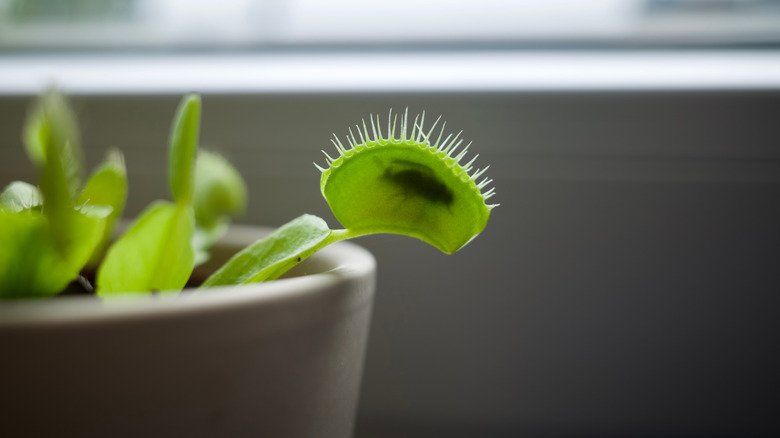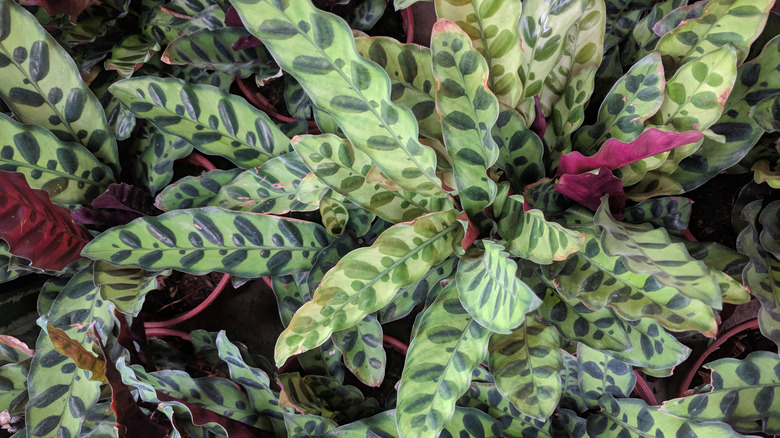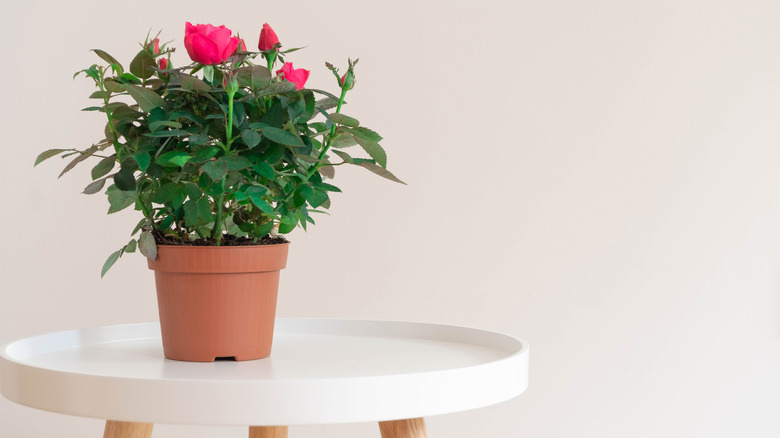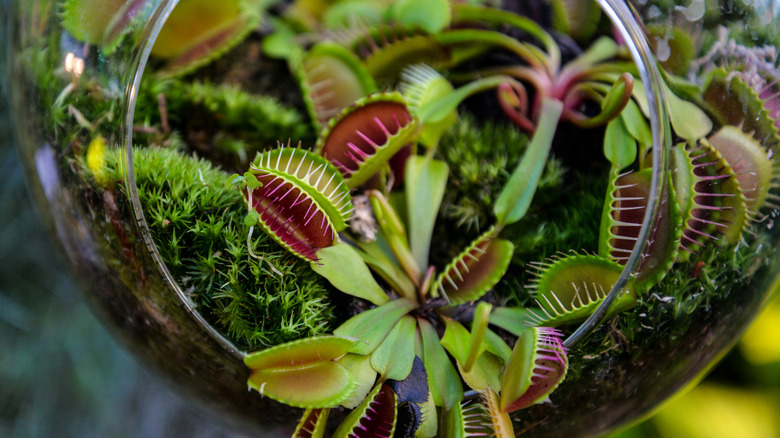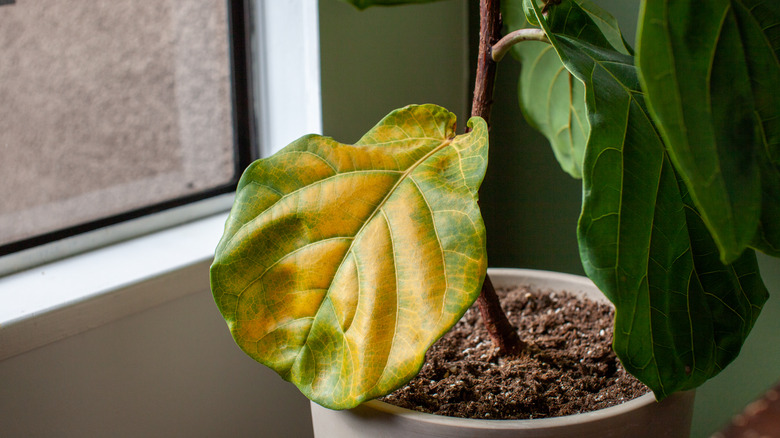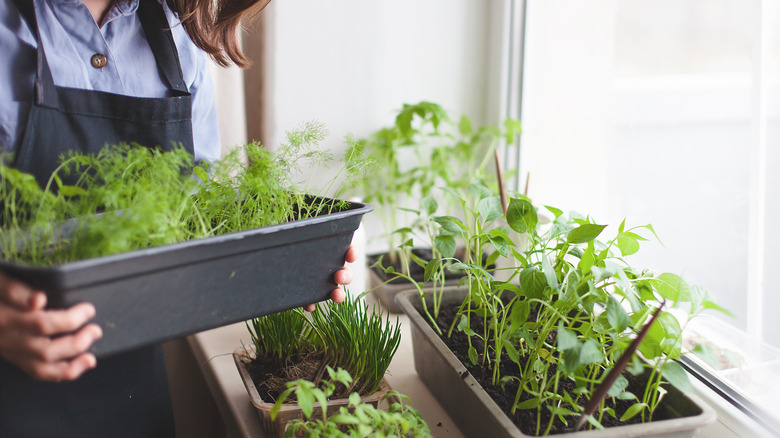5 Houseplants That You'll Regret Buying
Houseplants bring the beauty of nature into a living space, but they do require some maintenance and the right conditions to thrive. Some houseplants, like pothos (epipremnum aureum) and spider plants (chlorophytum comosum), are truly low maintenance, while others lure you in with their beauty and interest but become problems when you try to keep them alive at home.
According to Healthline, there are many benefits to indoor gardening. Plants may help clean the air in your home, increase your productivity, and reduce anxiety. Houseplants also add texture, color, and interest to your home design, but the wrong plants may have the opposite effect. Of course, houseplants are beautiful, but you certainly do not want a plant that is going to create more stress or frustration as you try to keep it alive, so avoid buying houseplants that you'll regret. If you have a home with children or pets, research each plant you are considering before bringing it home to ensure it is not toxic.
Calathea
If you are a novice indoor gardener, it's best to avoid calatheas (calathea), which is difficult because this family of plants is so interesting and beautiful. Also known as prayer plants, according to Gardening Bank, available options include the rattlesnake plant (calathea lancifolia), which is known for its beautifully spotted foliage, and peacock calathea (calathea makoyana), which produces leaves that look like the feathers of its namesake. This plant family is beloved by indoor gardeners in part because of the frequent movement of their leaves.
With their tolerance of low light conditions, it seems like calatheas would make the perfect houseplant, but they are very particular about soil, temperature, and humidity, states Osera Houseplant Care. Because they are tropical plants, they like a warm, humid home and consistently moist soil. If your home stays cool and dry in the winter, you will need to invest in a humidifier for this picky plant and keep it away from drafty windows and doors. In short, calatheas need a lot of attention.
Miniature rose
Miniature roses (rosa chinensis) are so tempting to buy when you see them at the garden center. They have the aroma and classic shape of a rose garden but are tiny enough to grow indoors. While you can technically grow them in the home, they have some hefty requirements and are prone to pests.
According to Dave's Garden, keeping a miniature rose alive indoors requires full sun, which means eight or more hours of direct sunlight. Even with a south-facing window, it's difficult to get that much natural light. You can supplement with a full-spectrum grow light, a necessity during the short days of fall and winter, but the lights must be around 1,500-foot candles –- units of light measurement -– in intensity.
Since they are warm-weather plants, miniature roses like a warm environment and at least 50% humidity. Even if you can provide the right environmental conditions, you may have to deal with pest and fungal issues, including spider mites, aphids, and black spot fungus. If you're shopping, it's best to pass on the indoor miniature roses and grow them outside instead.
Venus flytrap
Carnivorous plants are fascinating to watch, so why wouldn't you want one in your home? The idea of a plant that feeds itself and requires no fertilization is compelling, but they are not easy to keep alive. Using the right water for venus flytraps (dionaea muscipula) is just one element of helping this plant thrive in the right environment. These plants do not tolerate tap water. Instead, they need reverse osmosis, distilled, or rainwater, according to Los Angeles Times. The water in the air is also important to keep venus flytraps alive. Since their native habitat is the swampy areas of the Carolinas, they require high humidity and a warm spot away from cool breezes.
Although you don't have to use traditional fertilizer on venus flytraps, they do require feeding at least once every week or so, according to NYBG. If you don't have many insects in your home, you can purchase live meal worms to feed your plants. Doesn't that sound like fun? If you are not into bugs, you may want to select something less carnivorous.
Fiddle leaf fig
There is no debate that fiddle leaf figs (ficus lyrata) make a beautiful addition to a home's decor, but the large ones can be extremely pricey and you're taking a gamble on your ability to keep it looking pretty. If you can keep the plant's environment perfect, it will live and grow happily for many years, but that is a big "if," because this plant has a lot of demands, states Gardenista.
Fiddle leaf figs do not like change and they will let you know quickly if you have displeased them with insufficient light, soggy soil, too little humidity, or dry soil. Those big, beautiful leaves will start to turn brown and eventually fall off. Unlike many other leafy indoor plants, it takes a long time -– and the perfect conditions -– for fiddle leaf figs to grow new leaves. If you have one of these gorgeous plants and it's happy, do not, for any reason, move it. That's where it lives now and forever.
The good news about fiddle leaf figs is that if you have your heart set on having this plant in your home, there are smaller varieties that are less expensive, but just as pretty. There are also some very attractive faux options that do not care about humidity.
Indoor herbs
The idea of going to your kitchen window to harvest fresh herbs for your meal is appealing, and it is possible -– but it's not easy. When you grow herbs outside, they are in their natural environment where mother nature provides the light, humidity, and rain necessary for a growing herb. If you want to grow herbs inside, you must become mother nature to those plants, some of which are easier to grow than others.
According to Platt Hill Nursery, cool season plants like cilantro, mint, and parsley require less light than hot weather herbs like sage, basil, and rosemary. While it's difficult to provide eight hours of full sun indoors, you could grow herbs with lower light requirements in a south-facing window. If you decide to try to grow herbs inside, don't expect them to grow as quickly or as large as their outdoor counterparts. They tend to get leggy due to less direct sunlight, but if you still want an indoor herb garden, pass on the heat and sun-loving basil and opt instead for less demanding parsley and cilantro for your kitchen window.
